Cinquefoil "Goldfinger": description, planting, care and reproduction

Goldfinger cinquefoil is a shrub plant with high ecstatic qualities. The flower is often used in landscaping, as well as a hedge. The plant is perfect for decorating a garden, park, square and other similar location. We will devote the article to this representative of the flora, consider the features of the species and agricultural technology.
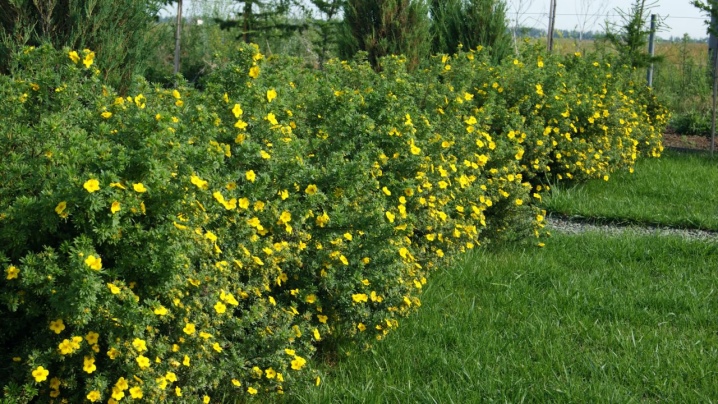
Description
The main distinguishing feature of the flower is the large and lush buds of rich yellow color. This feature attracts both experienced gardeners and beginners who want to decorate their site. It is worth noting the following characteristics of the plant.
- The maximum height of shrubs reaches 1.5 meters. They grow very slowly.
- Colorful yellow flowers cover the Goldfinger abundantly during the flowering period.
- The crown is lush and wide. Neat green leaves have special decorative qualities.
- The root system is poorly developed. This must be taken into account when planting and do not deepen the shrubs too much.
- The plant blooms from May to early autumn.
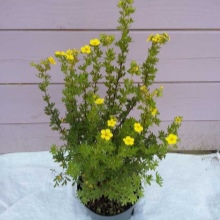
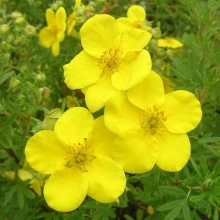

Advantages and disadvantages of the view
Florists celebrate the following positive aspects of the variety.
- The first thing to be noted is high decorative qualities. Lush foliage and large flowers will stand out noticeably both in the territory of a large garden and in a neat flower bed.
- Bright colors attract butterflies, which become an additional decoration.
- The plant is highly resistant to frost and temperature changes.
- Due to its unpretentious care, the variety is suitable for growing by novice gardeners.
- Strong immunity protects the plant from diseases and attacks from bacteria and harmful insects.
- There are several ways to propagate a variety.
- The cultivation process does not require much effort.
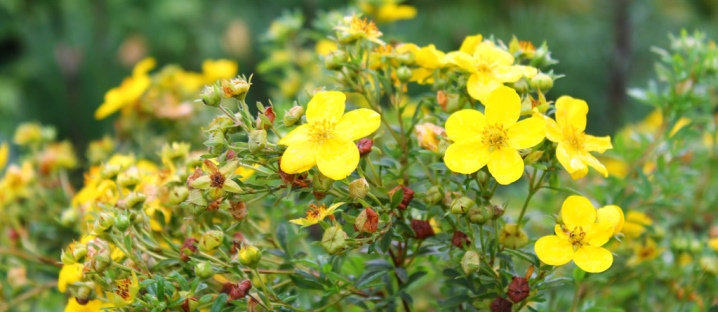
Having indicated the pluses of the above type, it is imperative to indicate the minuses.
- Cinquefoil grows slowly. Florists will have to be patient when growing. As practice shows, up to a height of 30 centimeters, a shrub can grow for several years, which is half of its life cycle.
- When cultivating a flower in hot regions, it is necessary to frequently moisten the soil. The plant does not like drought, it can be destructive for him.
- For full development and abundant flowering, it is necessary to apply fertilizers.
- Make sure that water does not stagnate in the soil. This can cause stem and root rot. Be sure to add a layer of mulch to help deal with the problem.
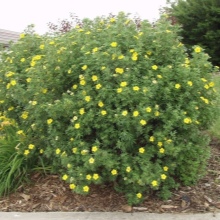
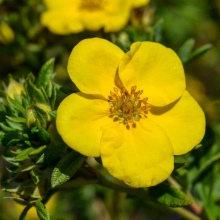
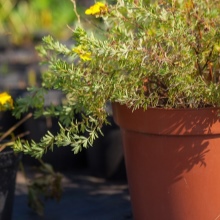
The use of varieties in landscape design
Charming appearance, bright colors, dense greenery, large flowers - all this played an important role in the popularity of the plant. It is actively used in the design of house plots, the creation of "living" compositions and hedges, as well as for the ennobling of the territory.
Shrubs are often planted close together to form a line. Many gardeners believe that in this form the beauty of plants is revealed to the maximum. However, solitary plants are also highly attractive and charming.
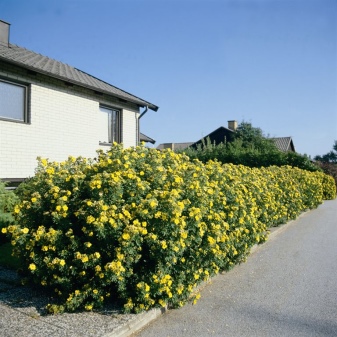
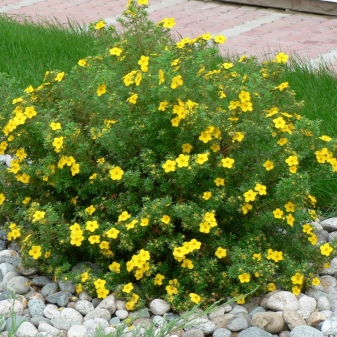
Specialists often plant Goldfinger Potentilla along with other shrubs.Yellow buds are in perfect harmony with bright flowers of various types, creating a rich variety of colors.
The fact that the plant does not require special care has also influenced the widespread use of the variety in the design of land plots.... The main thing is to choose the right planting site for growing and follow simple agricultural techniques.
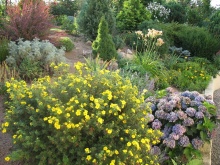
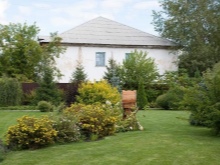
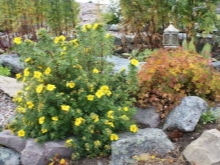
Site selection
Experts note that a flower can be planted in almost any area, however, choosing the right location will play an important role in the attractiveness of the plant. It is recommended to refuse to plant shrubs in darkened locations. Lack of sunlight can slow down an already slow growth process. Over time, Goldfinger will get used to these conditions and will feel great, but the bushes will remain small.
To maximize the growth of the shrub, you need to choose a carefully lit area.
remember, that the plant does not tolerate dry weather... In this case, you need to carry out regular watering and monitor the condition of the leaves and buds of the flower. Due to the fact that plants can easily tolerate cold, they are cultivated in open ground, without the use of greenhouses and shelters.
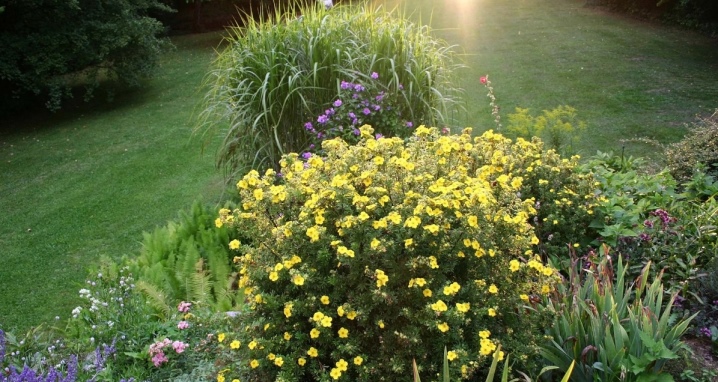
Landing site preparation
Regardless of which site you choose, preliminary preparation should be done. The first step is to clear the land of weeds, grass and other excess vegetation.
The flower will feel better in loose soil; for this, the soil should be carefully dug up.
Also, the earth is periodically loosened during the growth of the flower. This ensures the supply of oxygen to the root system, which has a positive effect on the condition of the plant. It is advisable to add top dressing. Nutrients will help the flower adapt faster in a new place (when planting seedlings) and give strength to bud.

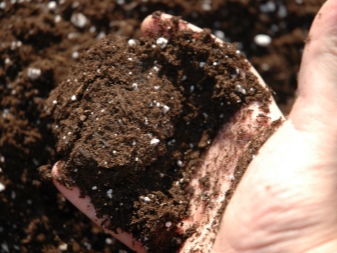
Landing
During work it is recommended to adhere to the following rules.
- It is best to plant this variety in the first spring month.
- The depth of the planting pit should be between 50 and 60 centimeters.
- A drainage layer should be formed at the bottom. Use chunks of broken brick or rubble.
- During work, be extremely careful, sprinkle the root system of the plant with earth carefully so as not to damage it.
- If necessary, humus or mineral compositions can be used as top dressing.
- Use clean, warm water when watering. Young plants need to be watered more often than adults, especially at first.
- If the soil is acidic, it should be stabilized.
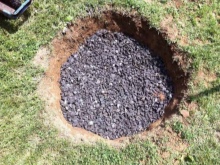
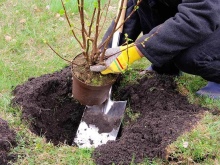

Watering and fertilizing
Due to stagnant liquid, the plant may die, so watering should be moderate and periodic. In the hot season, the flower especially needs water. One shrub uses 10 liters of liquid. Irrigation is carried out 3-5 times throughout the season.
Do not use raw water - purified or settled water is best.
It is recommended to choose organic compounds or mineral supplements as top dressing. Experienced gardeners recommend fertilizing the first time during planting, the second time the soil is fed in a month. You can also help the plant during flowering by saturating the soil with useful trace elements.
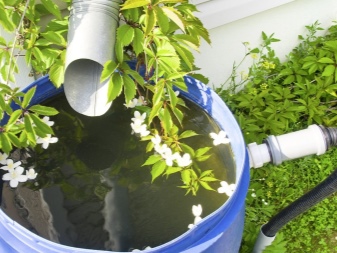

Pruning
One of the components of plant care is pruning. It helps to maintain the attractive appearance of the flower, and is also needed for the full development of the plant and its comfort. The procedure is carried out as it grows.
Experts advise to prune the bush in winter, when the period of severe frosts has completely receded. If it is necessary to correct the appearance of the shrub, the work is performed in early autumn or in April.
Gardeners shorten excess shoots, ennobling the appearance of the flower and making it more attractive and neat. Shoots can be cut to a maximum of 10 centimeters.
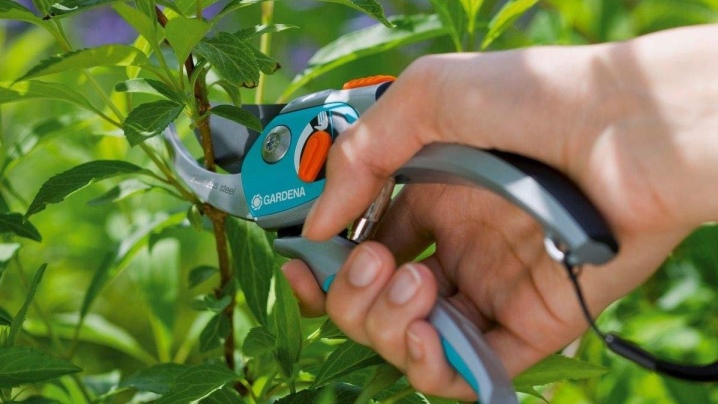
Wintering
As mentioned above, Goldfinger Potentilla is considered an unpretentious plant, it tolerates the cold season remarkably and does not need complicated care. In this case, it is necessary to adhere to the minimum agricultural technology when growing the variety.
Since the flower is naturally resistant to temperature fluctuations, it is not necessary to cover the plants for the winter. You can also leave the plant at the planting site without digging out and transferring the shrubs to a greenhouse or a warmed place. With the onset of winter, the shrubs are left in the open air without any changes. In this state, they are waiting for the arrival of spring.
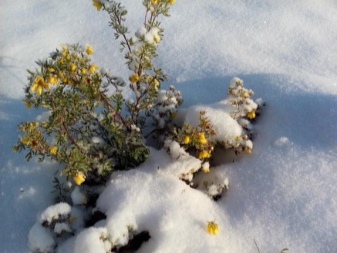
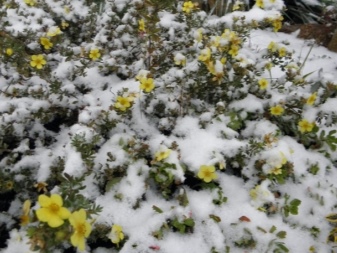
Breeding options
The plant can be propagated at home. Gardeners choose one of several available methods:
- The process of dividing the bush is suitable for regions with warm climates. The work is carried out in the fall or spring. The plant is divided into 2 parts, and then rooting is carried out.
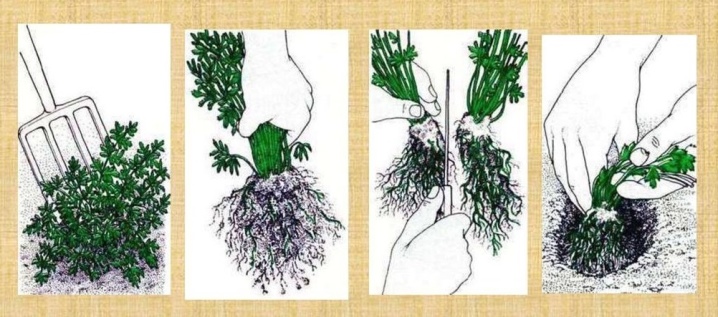
- Propagation by cuttings has many subtleties. It is necessary to carefully separate the lignified shoot and plant it in the ground. It must have at least 3 sheets of paper.
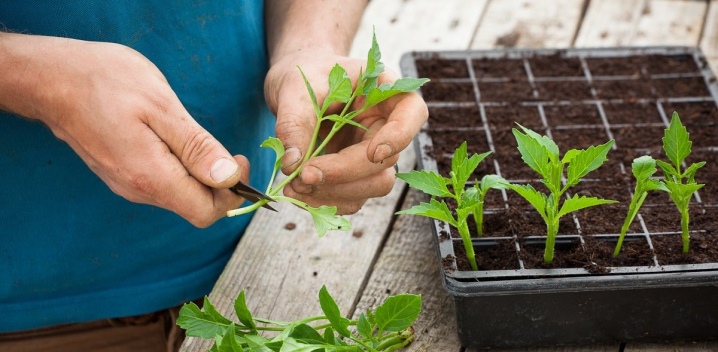
- When using seeds, the seed is distributed in containers. After the young seedlings are transplanted into open ground. This usually happens in April.
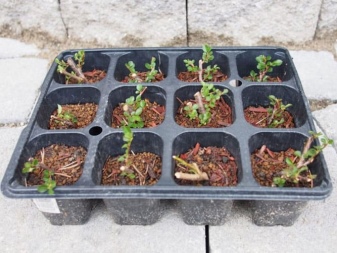

- Another way is to propagate the plant by layering. On fresh shoots, cuts are made, the branches are pressed to the ground and sprinkled with soil. After about a week and a half, roots are formed.
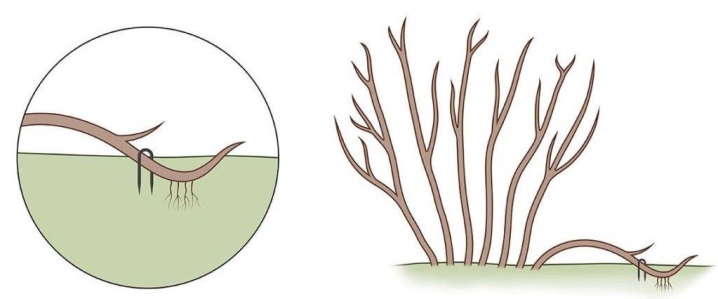
Growing problems
According to the statement of many experienced gardeners, the Goldfinger Potentilla practically does not get sick. Also, the plant is not afraid of most pests due to its strong immunity. However, it is recommended that you periodically inspect the plant for symptoms of disease.
Certain weather conditions can cause plant disease. The condition of the flower can be degraded by humid and cold climates. This provokes the appearance and development of the fungus. You can protect Goldfinger with fungicides. Insecticides are actively used against harmful insects.

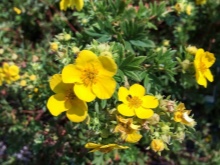
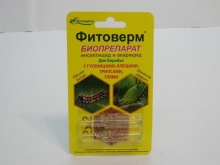
Use in traditional medicine
The plant has found its use in alternative medicine. The leaves of this variety are rich in ascorbic acid. In terms of the concentration of this element, Potentilla can even be compared with the fruits of black currant. Local residents living in Siberia have long been brewing tea from dried or fresh leaves of a bush.
Anyone can prepare such a drink. It is brewed in the same way as regular tea. This drink has a positive effect on the work of the cardiovascular system. Also, in addition to a pleasant aftertaste and delicate aroma, it promotes efficiency and gives a feeling of cheerfulness.
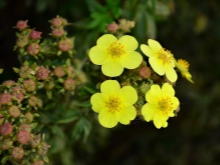
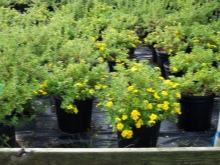
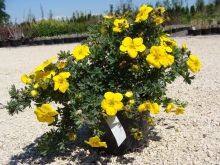
How to plant this shrub, care for it and use it, is described in detail in the next video.



































































The comment was sent successfully.